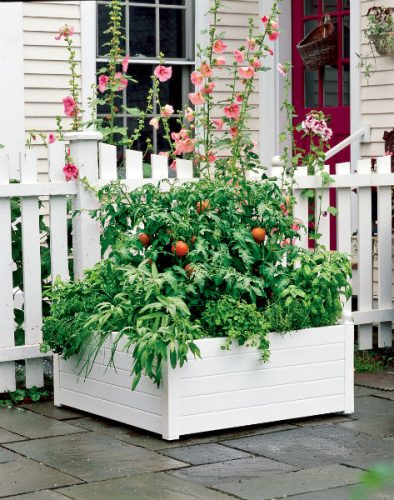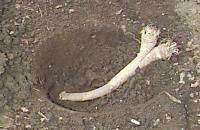A great question came in this week from a cauliflower gardener:
“I was so excited to have just harvested my first cauliflower! It was big, beautiful and infested with little grayish white bugs! (aphids, I think?). I couldn’t salvage it because there were literally hundreds embedded just beneath the tops of the florets. I have several other cauliflower plants growing, some are new, some almost ready to harvest.Is there anything I can do to prevent future infestations?”
First of all, congratulations on being able to get cauliflower to set a head! That, in and of itself, is a great thing. Cauliflower can be tricky sometimes, and much like its other brassica siblings (cabbage, broccoli, Brussels sprouts, kohlrabi, etc) it can attract aphids in warm weather or when the plant is weak.
My first line of defense is to grow brassicas in the fall here in Southern California. Since the weather is (usually) cooler, we have a better chance of success when growing these plants in fall than during our warm spring and summer time. Now, it sounds like you already tried this, so let’s move on to the next defense.
1) Feed your soil. Pests show up when a plant is weak. It’s like they can smell fear! Give your plants a boost with kelp or fish emulsion and a good 1/2 inch of compost.
2) Here is a garlic oil spray that you can make and apply to your plants: Garlic Oil to the Rescue
3) Check for ants. Ants and aphids have a symbiotic relationship. If you manage the ants, you’ll help manage the aphids. Here’s a blog entry on how to do that: Ants on my Artichokes
4) Get some lady bugs and plant some umbels. Lady bugs, especially their larvae, eat their weight in aphids and then some. Umbels are plants that flower in an umbrella shape like parsley, cilantro, yarrow, unions, dill and fennel. These umbels attract parasitic wasps that lay their eggs in the aphids and decrease the population for you.
Lastly, a sharp blast of water from a hose nozzle will clear aphids temporarily, and will significantly help clean off your harvest. Just be careful not to blast it too hard, or your destroy your plant’s tender parts.
I’ll admit, my kale is covered with aphids right now, and I’m using all of these techniques to battle them. In the end, they will all meet the compost bin, and we’ll try again next year. This is part of the cycle of life. We just have to make sure we get to our produce before the bugs do. Here’s to diligence!



Pingback: YouTube: What's Eating My Plant - Part 2 - Gardenerd
Pingback: YouTube: Battling Aphids without Bug Spray - Gardenerd
FYI … When I clicked on the PODCAST link for the audio file on this topic, I only saw a bunch of XML code. So I scrolled down to the ANT article, copied the MP3 file (link below) and launched that in my browser. Not sure if others are having same issue, … but going directly to the MP3 link was easier for me. I don’t have iTunes on my laptop or other PODCAST player.
https://www.gardenerd.com/Podcasts/Gardenerd_Tip_of_the_Week10-04-08.mp3
Thanks, Chris. The podcast wasn’t published yet when we wrote the newsletter. I’ll go back in to edit that now.
Here’s the correct link to this week’s podcast: https://gardenerd.com/Podcasts/Gardenerd_Tip_of_the_Week08-22-14.mp3
Sure thing. As long as you don’t post spam to this blog, we’re all good.
Garlic has worked for me in the past as far as aphids are concerned, but this past season I needed a sort of “catchall” bug spray since there were other pests attacking my garden. To save time instead of making ten different homemade solutions, I just went out and bough an organic spray. I used this End All spray if you’re curious.